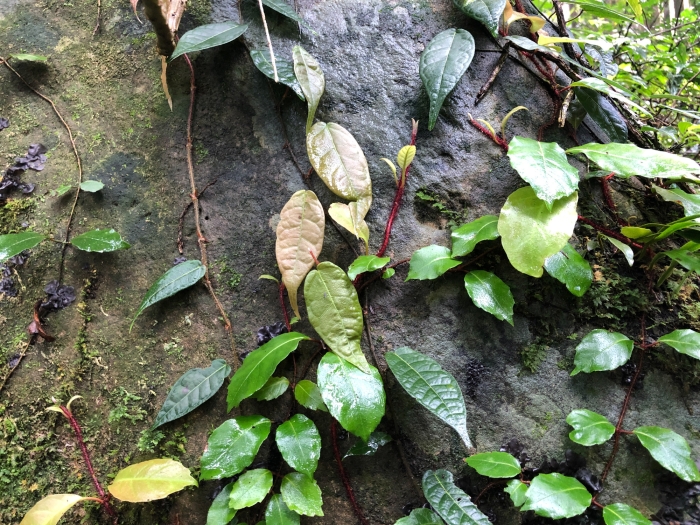Ban Timila
(Ficus sarmentosa)
Ban Timila (Ficus sarmentosa)
/
/

Cheng-Tao Lin
CC BY 4.0
Image By:
Cheng-Tao Lin
Recorded By:
Copyright:
CC BY 4.0
Copyright Notice:
Photo by: Cheng-Tao Lin | License Type: CC BY 4.0 | License URL: http://creativecommons.org/licenses/by/4.0/ | Rights Holder: Cheng-Tao Lin | Publisher: iNaturalist | Date Created: 2020-04-25T10:25:14-07:00 |

























Estimated Native Range
Summary
Ficus sarmentosa, commonly known as ban timila, is a climbing fig tree native to subtropical forests and forest edges in China, Eastern Asia, Taiwan, and the Indo-China region. It is a semi-evergreen plant that can grow as a large shrub or small tree, typically reaching heights of 10-15 feet (3-4.5 meters) with a similar spread. Ficus sarmentosa is characterized by its vigorous growth habit and its ability to climb by means of aerial roots. It bears small, inedible fruit and has a dense canopy of heart-shaped leaves, which provide a lush, tropical appearance.
This species is valued for its use in tropical and subtropical landscapes as an ornamental plant, capable of creating dense screens or being trained on trellises. It thrives in humid conditions with partial to full sunlight and prefers well-draining soil. Regular watering is necessary, especially in drier climates. In cultivation, it is important to manage its growth to prevent it from becoming unruly. Ficus sarmentosa has a tendency to escape cultivation and become invasive in some regions, so it should be planted with caution and monitored for unwanted spread.CC BY-SA 4.0
This species is valued for its use in tropical and subtropical landscapes as an ornamental plant, capable of creating dense screens or being trained on trellises. It thrives in humid conditions with partial to full sunlight and prefers well-draining soil. Regular watering is necessary, especially in drier climates. In cultivation, it is important to manage its growth to prevent it from becoming unruly. Ficus sarmentosa has a tendency to escape cultivation and become invasive in some regions, so it should be planted with caution and monitored for unwanted spread.CC BY-SA 4.0
Plant Description
- Plant Type: Tree, Vine
- Height: 15-25 feet
- Width: 3-6 feet
- Growth Rate: Rapid
- Flower Color: N/A
- Flowering Season: Summer
- Leaf Retention: Evergreen
Growth Requirements
- Sun: Part Shade, Full Shade
- Water: Medium
- Drainage: Medium, Fast
Common Uses
Low Maintenance
Natural Habitat
native to subtropical forests and forest edges in China, Eastern Asia, Taiwan, and the Indo-China region
Other Names
Common Names: Creeping Fig, Climbing Fig
Scientific Names: , Ficus sarmentosa, Ficus cabur, Ficus cabur, Ficus elegans, Ficus erecta, Ficus foveolata, Ficus foveolata, Ficus nepalensis, Ficus oblongifolia
GBIF Accepted Name: